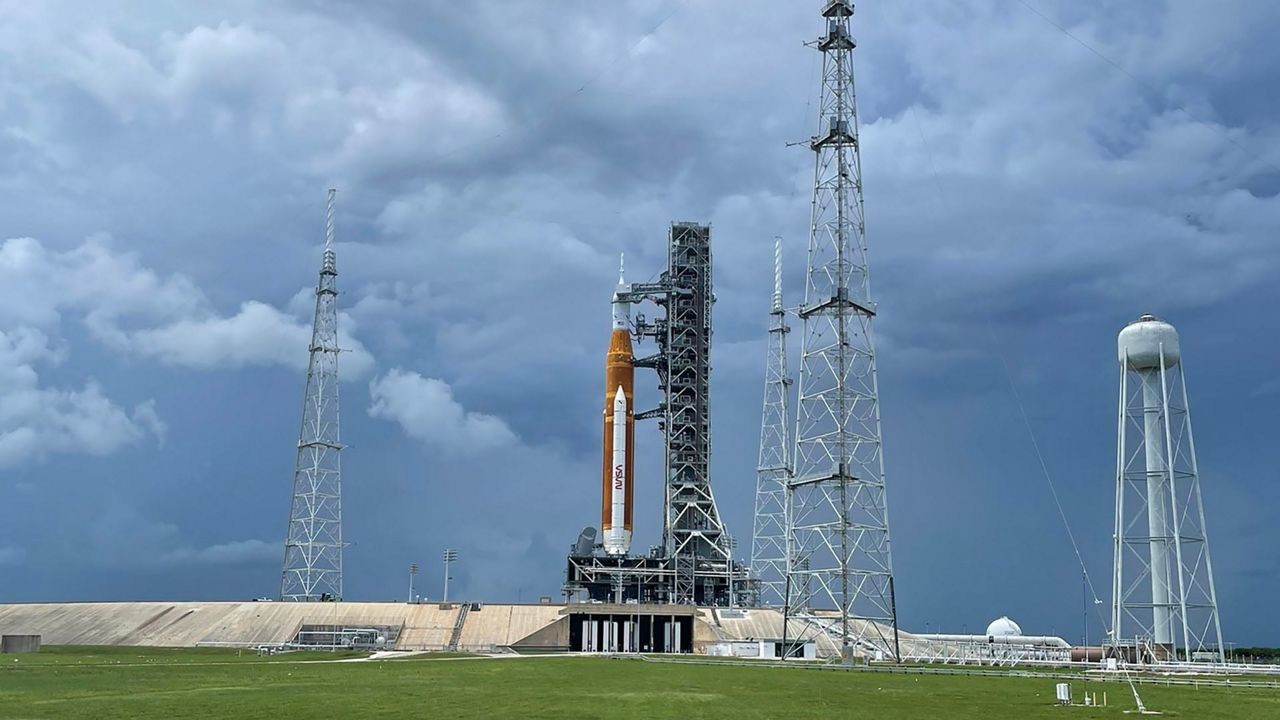KENNEDY SPACE CENTER — It looks like NASA’s third attempt to launch the Artemis I moon mission will be pushed back due to Hurricane Ian as the system is forcing NASA to prepare for a rollback of the Space Launch System rocket back into the Vehicle Assembly Building.
What You Need To Know
- NASA is preparing for a rollback
- If the space agency decides to do it, it may start early Sunday evening
- RELATED coverage: With potential storm approaching, NASA still a go for Artemis launch attempt
“NASA is foregoing a launch opportunity Tuesday, Sept. 27, and preparing for rollback, while continuing to watch the weather forecast associated with Tropical Storm Ian,” stated NASA in a blog post.
NASA stated that during a Saturday morning meeting, officials made the decision to stand down on the uncrewed launch attempt to give teams enough time to configure systems for possibly rolling the massive 212-foot-tall rocket and its partner, the Orion capsule, into the Vehicle Assembly Building from their current home on Launch Pad 39B at the Kennedy Space Center.
“Engineers deferred a final decision about the roll to Sunday, Sept. 25, to allow for additional data gathering and analysis. If Artemis I managers elect to roll back, it would begin late Sunday night or early Monday morning,” NASA declared.
During a teleconference on Friday afternoon, NASA officials said they would push forward with the Tuesday launch, but warned that they would keep an eye on Ian.
But come Saturday, NASA officials announced they would play it on the safe side and prepare for the rollback.
The predicted wind conditions would need to be 85 mph gusts at the launch pad for NASA to rollback the rocket to the Vehicle Assembly Building, explained Mark Burger, the launch weather officer of the 45th Weather Squadron, on Friday.
During the slow march back to the Vehicle Assembly Building, sustained winds would have to be less than 40 mph. It would take between six to 12 hours to make the 4-mile journey from the pad to the building.
Mike Bolger, NASA’s Exploration Ground Systems Program manager, said during the teleconference on Friday he did not think NASA was “cutting it close” in its decision to hold off on making a verdict to roll back.
Both Bolger and Tom Whitmeyer, NASA’s deputy associate administrator for Common Exploration Systems Development, both explained that tropical storms and hurricanes are unpredictable and even during the shuttle days, it was not uncommon for a storm with a projected path to the launch pad to shift and go elsewhere.
The 45th Weather Squadron issued a notice on Friday, stating that it was giving a 20% chance of favorable launch weather.
Recharging the batteries?
NASA had requested a waiver for a battery check of the rocket’s flight termination system from Space Launch Delta 45 Operations, which operates the Eastern Range. If the launch were to take place on Tuesday, it would be 42 days since the abort system batteries were checked, nearly double the time the agreement allowed.
Space Launch System rocket Chief Engineer John Blevins said on Friday's teleconference that the launch teams did get approval from the Eastern Range to launch Tuesday and on the backup launch date of Sunday, Oct. 2. However, if the rollback does happen, it remains to be seen if NASA will take the opportunity to recharge the batteries or when the next launch attempt will take place.
The Artemis I mission has been plagued with problems, from overheating engines to numerous liquid hydrogen leaks. It was during a test on Wednesday that another leak occurred, but NASA deemed the demonstration a success because teams were able to manage the leak.




